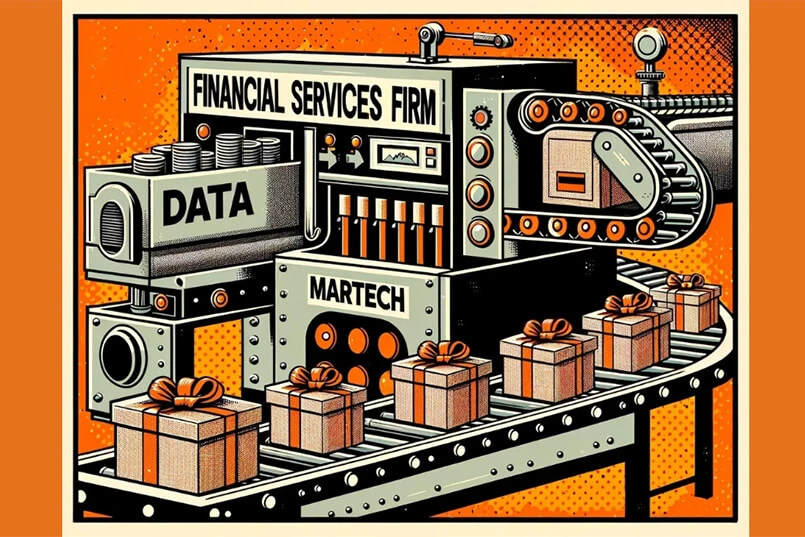Technology platforms, both martech and adtech, provide marketers with the opportunity to be more effective and efficient in their marketing. But technology is said to be moving at click speed and the investment is significant. It is important when investing in marketing technology solutions that the marketer has defined objectives and has a clear view of what success looks like. But, more than this, it is important to take into consideration the current processes that the technology is intended to support and the cultural appetite for change.
We have been involved in helping companies select new technology platforms and tender for new vendors, but we have also worked with organisations that have legacy systems and platforms that are under-performing or not performing at all, and have provided a diagnosis and options for consideration. Also, we have reviewed our clients’ current technology stack to identify optimisation opportunities and assess the organisation’s technology transformation. Each time we bring a totally independent and expert perspective to the process. Here are three case studies of the work we have undertaken providing solutions to marketers’ technology challenges.
CASE STUDY 1
Entertainment House of Brands – Underperformance of an Existing Technology Platform
Challenging Problem: With an increased focus on content marketing and an increased demand for advertising and marketing collateral, along with access internally and through partners to a wide range of digital assets, the company had been building in-house capabilities for producing advertising and marketing content across a range of brands within the organization. Several years ago a marketing technology platform was introduced to manage workflow, approvals and brand compliance. Today the teams are concerned that this platform no longer meets their needs or delivers the outcomes they require.
Creative Solution: Beyond the required capabilities, successful technology platform integration requires cultural, strategic, and process alignment with the organisation against specific outcome objectives. We proposed undertaking an assessment of the current platform against all four critical criteria, defining options and making recommendations.
Process: The process required multiple approaches including:
- A series of one-on-one interviews with key internal stakeholders
- Group interviews with external stakeholders and vendors
- Technology review meetings with the existing platform vendor
- Process and performance metrics reviews
The results of the discovery phase were reviewed internally, and a list of issues arising from the current platform integration and performance were identified.
These were then sense-checked against external suppliers using the platform, and the list was taken to the platform vendor for review and discussion.
This informed the report, and options were developed with a recommendation for the organisations based on the findings.
The report was presented to the client project team and then finalized before the report was presented to management with the recommendation.
Timeline: The diagnostic took four weeks and was finalised with a draft finding report, and the final report delivered to management in week six.
Result and feedback: It was discovered that the selection criteria for the current software platform had never been clearly defined, and so much of the functionality for the chosen platform had never been implemented within the organisation. Over the two years of growth, the platform was increasingly viewed as slowing the process, with poor engagement from the tech provider team.
Eventually, much of the organisation had found ways to work around the system, leaving others in the process feeling the system had failed. In the meantime, there had been a succession of upgrades and new version releases that would have provided the improvements the team required. Of the various options available and contemplated by the organisation, the recommendation was to wind back the system and upgrade to relaunch the system into the organisation as a fully functional solution.
You can find out more about our Technology Performance Optimisation Solution here
CASE STUDY 2
Consumer Package Goods House of Brands – Selection of a New Technology Platform
Challenging Problem: With more than a dozen brands in the portfolio, the marketing team had largely been leaving the management of the owned assets, including websites and social media, to their digital agencies. But a question had arisen as part of the annual planning process as to the state and health of the digital marketing in the company. The CMO informed the CIO that none of the marketing assets were currently within the company’s technology infrastructure.
Creative Solution: We were engaged initially to find a digital supplier who could solve the challenges the company was facing. We recommended scoping the company requirements beyond marketing, fully to define the enterprise-wide requirements of marketing, sales, corporate strategy and IT.
We set up a cross-functional team within the organisation and commenced the scoping process with a view to identifying the requirements, taking the company to a tender to select the appropriate vendor, and then rationalising their existing roster of four digital agencies to the one agency accredited to support the selected technology platform.
Process: We proposed a multi-stage process including:
- Undertaking an audit of their current digital assets in owned and earned media
- Defining the requirements of an enterprise platform across the various stakeholders determined through one-on-one interviews
- Reviewing the current technology stack within the organisation
- Providing the scope and specifications for the platform, and recommending three possible vendors to participate in a tender run by the company with our assistance
- On the selection of the platform, reviewing the current digital agency vendors, and in the absence of a certified supplier managing a selection process to replace the current digital agencies with a certified supplier.
Timeline: The scoping took six weeks, with the report reviewed by the internal cross-function team, and the recommendations then taken to the Board. The platform tender was managed internally using the recommendations of our scoping report and it took the company 4 months to select a platform vendor. We then proceeded to rationalise the digital agencies to select a certified digital agency for the platform selected which took ten weeks.
Result and feedback: The audit discovered that there were multiple websites and landing pages hosted on a number of platforms and server environments provided by the roster agencies, posing a significant risk to the company. The stakeholders had a broad and eclectic range of requirements depending on the discipline. They were also unaware of the opportunities and benefits of having an enterprise platform for content management, so there was an educational process involved in these discussions.
The scoping process led to a defined need for a CMS and three were recommendations that had the ability to deliver the enterprise requirements. The selection of the CMS platform led to a successful rationalisation of the multiple digital agencies to one certified to support the CMS platform and the recovery of the owned assets to the platform.
You can find out more about our Technology Supplier Search & Selection Solution here
CASE STUDY 3
Financial Services – Review of the existing technology stack to optimise performance
Challenging Problem: The company had a number of technology platforms including Customer Relationship Management (CRM), Content Management System (CMS), Data Management Platform (DMP), and assorted customer databases as part of their marketing technology stack. But with an increase in the amount of content being developed in-house and across the agency roster, they were looking to selecting and implementing a marketing workflow system that would integrate into the existing stack, particularly in regards to providing a centralised Digital Asset Management System (DAM).
Creative Solution: We undertook a survey of the current technology stack within marketing, reviewing each platform and implementation and interviewing key stakeholders, and more importantly end users, to understand how the technology stack was currently being used and how well it was performing.
Process: The process was a multi-layer approach including:
- Survey of current technology platforms and their implementation
- Stakeholder and end user interviews to understand purpose and performance
- Review of current system specifications and requirements of the workflow platform or system
The initial survey revealed that much of the functionality required of the workflow platform existed in the CMS, which had an excellent DAM. This meant that the company needed to make some decisions on the scope of the requirements of the new workflow system to determine if they needed to implement a new or additional platform or simply re-scope and configure the functionality within the existing stack.
Timeline: The diagnostic took seven weeks and was finalised with a draft report shared internally along with the options for the workflow platforms best suited to the requirements and the current stack.
Result and feedback: The survey of the current technology stack revealed that rather than a stack implemented across marketing, which would be the approach with a marketing workflow platform, each platform in the stack had been implemented to particular functions or silos within the organisation. Therefore there was no marketing enterprise solution but rather tools to fulfil a specific functional need.
An example of this was the use of the DAM inside the CMS – used specifically for owned and earned media, and to support the CRM activities, but not available to the wider marketing team or their agencies and external suppliers. Depending on the specific requirements of a marketing workflow platform, it was possible that the organisation already had the functionality required, but had not implemented the technology across all of the marketing function.
You can find out more about our Technology Stack Assessment Solution here
Technology is revolutionising marketing and marketing practice, with new innovations and more technology options every day. Read how we can help you with your technology performance solutions.






